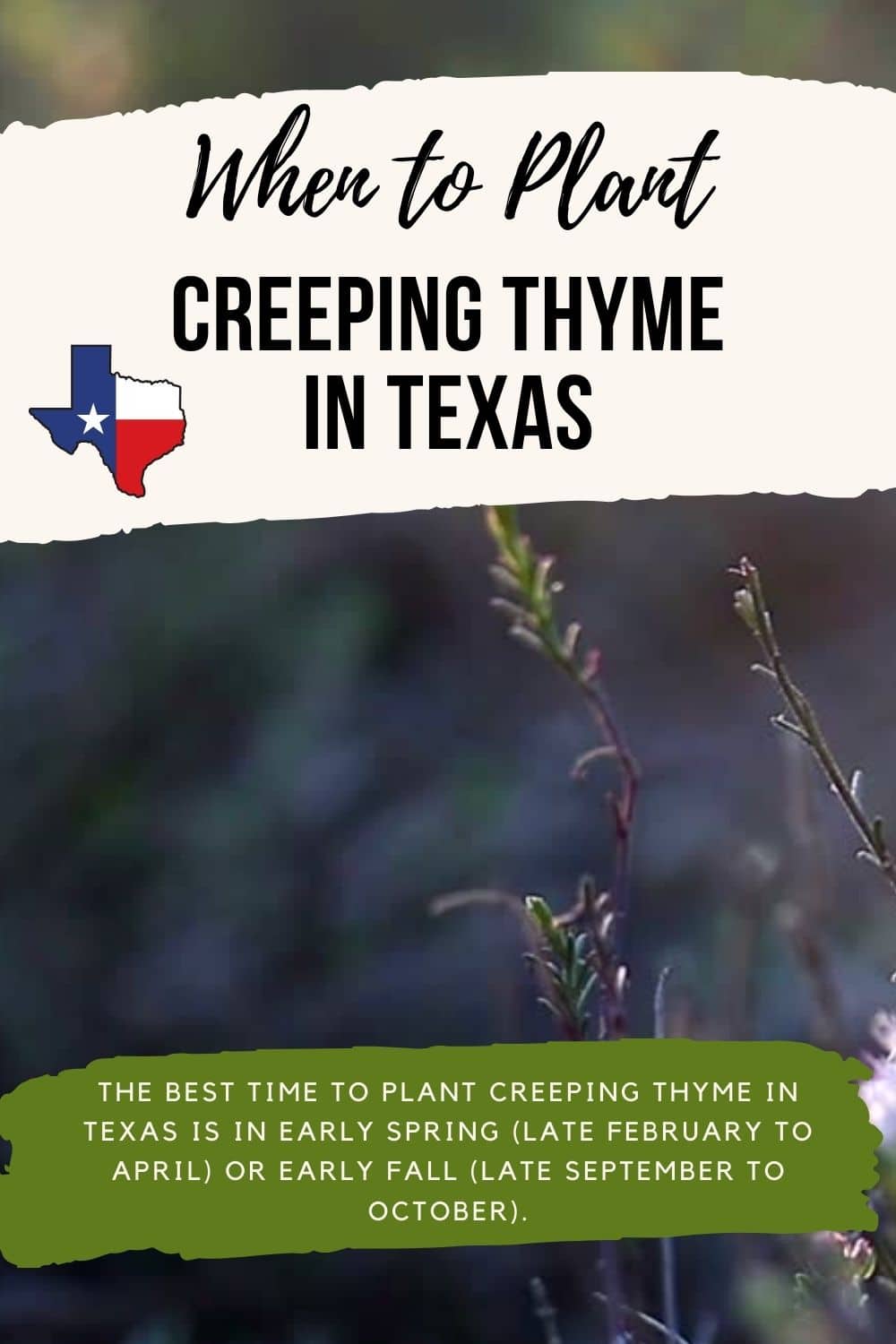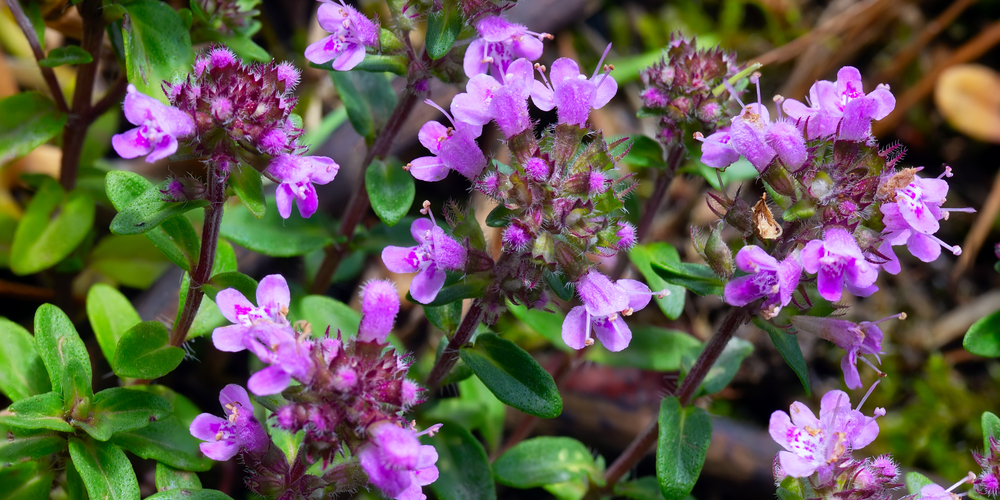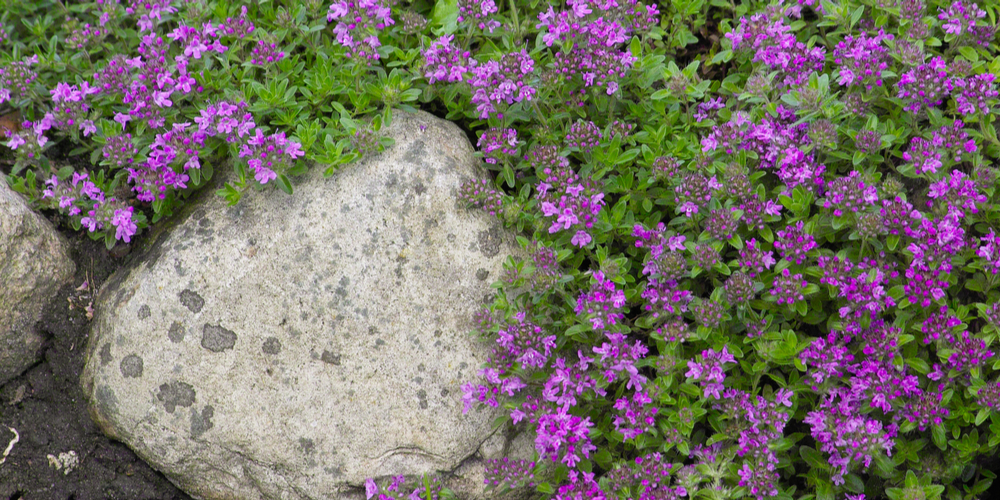
The best time to plant creeping thyme in Texas is in early spring (late February to April) or early fall (late September to October).
Creeping thyme is a delightful herb that provides many benefits. It smells delicious, and you can pick it up and use it in the kitchen. Plus, it is a hardy plant that some people use as a lawn substitute.
If you live in Texas, you might wonder, can I plant creeping thyme in Texas? This question is a good one because the environment in Texas is not always the most welcoming to plants. Keep reading to learn everything you need about playing this delightful herb in your Texas garden.
What Is Creeping Thyme?
Creeping thyme (Thymus serpyllum) is a member of the mint family. This herb is creeping, which will spread outwards in your garden as it grows. It can become up to six inches tall, and the leaves are tiny. When creeping thyme blooms, you’ll see pretty, pink, or lavender flowers.
You can find this plant in Europe, Asia, and North Africa. People have used it for culinary and medicinal purposes. And creeping thyme is still popular today because it’s easy to grow and care for.
Can You Plant Creeping Thyme in Texas?
The short answer is yes; you can plant creeping thyme in Texas. This herb is pretty hardy and can handle some harsh conditions. You can grow it in most parts of Texas, as long as you are not in the desert. It will even do well in poor soil if it’s not waterlogged.
That said, a few things to keep in mind if you want your creeping thyme to thrive. First, this herb does best in full sun. If you live in the hottest parts of Texas, you might want to give it some afternoon shade. Second, creeping thyme needs well-drained soil. The roots can rot if the plant sits in water for too long.
To ensure your soil drains well, add some organic matter to it. The organic matter could be compost, manure, or peat moss. Mixing in some sand can also ensure the soil is not too dense.
How to Plant and Transplant Creeping Thyme
The best time to plant creeping thyme is in the spring after all danger of frost has passed. You will want to choose a location with full sun and well-drained soil. Once you have found the perfect spot, you are ready to plant.
If you are starting with creeping thyme seeds, sow them on the surface of the soil and lightly press them down. Water well and keep it moist until the seeds sprout. Sprouting can take up to two weeks.
If you are transplanting creeping thyme plants, dig a hole twice as wide as the root ball. Gently remove the plant from its pot and place it in the hole. Backfill with soil and water well.
Creeping thyme is a fast-growing plant, so you need to space the plants eight to 12 inches apart. This space will give them room to spread out as they grow.
How to Care for Creeping Thyme
Once you plant your creeping thyme, it is pretty easy to care for. This herb doesn’t need a lot of water, so you only need to water it when the soil is dry. Be careful not to overwater, as this can cause the roots to rot.
Fertilizing is unnecessary, but you can boost your creeping thyme with compost or organic fertilizer in the spring. Just be sure to use a low-nitrogen fertilizer, as too much nitrogen will cause the plant to produce more leaves and fewer flowers.
Creeping thyme is a low-maintenance plant, so you don’t need to worry about pruning it. If you want to keep it tidy, you can trim off any straggly growth in the spring.
Wrap Up
Well, there you have it. You can plant creeping thyme in Texas with little to no concern. As long as you are not in the desert, this hardly little plant will grow ideally in your garden. Be sure to give it full sun and well-drained soil, and you will have a thriving creeping thyme patch in no time.
Last update on 2025-04-19 / Affiliate links / Images from Amazon Product Advertising API




